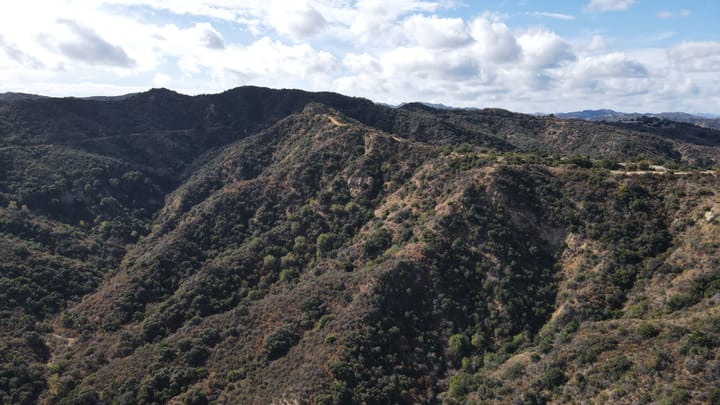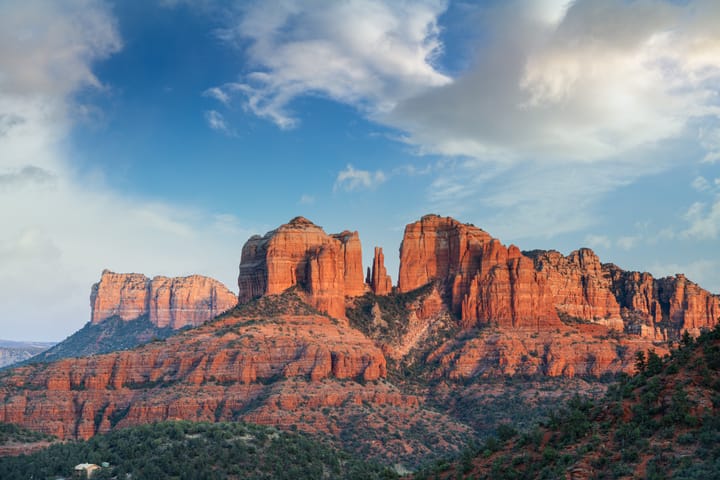Manuel Antonio National Park: A Complete Guide
Manuel Antonio National Park, a gem on Costa Rica's Pacific coast, offers lush rainforests, beautiful beaches, and a diverse array of wildlife. This guide helps you plan your visit, whether for a quick trip or an extended stay, featuring tips on tours, transportation, safety, and packing essentials.

Introduction
Manuel Antonio National Park, nestled along the Pacific coast of Costa Rica, stands as a testament to the country's commitment to conservation and biodiversity. This jewel of natural beauty is renowned for its stunning landscapes, ranging from lush rainforests to pristine beaches, and is home to an incredible array of wildlife. As one of Costa Rica's most beloved destinations, the park offers visitors a unique opportunity to connect with nature and experience the rich ecological tapestry that makes the country a global leader in environmental preservation.
Planning Your Visit
Duration of Visit
Half-Day Exploration: For those with limited time, half a day in Manuel Antonio National Park allows for a taste of its natural splendor. Visitors can embark on a condensed journey through rainforest trails, enjoy wildlife sightings, and unwind on serene beaches. Booking a guided tour or navigating the park independently requires prior ticket purchase online, ensuring access to the park's highlights within a tight schedule.
Full-Day Adventure: A full day in the park affords a more relaxed and thorough exploration. It's an ideal timeframe to delve into the park's diverse ecosystems, observe a wider range of fauna and flora, and savor the tranquil beauty of its beaches. Additionally, the vicinity offers attractions like the Butterfly Botanical Gardens and the Rainmaker Conservation Project, enriching the day's itinerary.
Multiple Days Stay: Opting to spend two to three days in the area allows for an immersive experience. Manuel Antonio and nearby Quepos host charming boutique hotels and vibrant local dining scenes. Extended stays open up possibilities for engaging in outdoor adventures such as kayaking, snorkeling, and zip-lining, as well as exploring other natural treasures like Carara National Park and Marino Ballena National Park.
Guided Tours
Nature Guided Tour: A half-day guided tour introduces visitors to the park's ecological wonders, providing glimpses into the lives of monkeys, sloths, and various bird species, enriched by professional insights.
Private Tour: Offering a customizable experience, the private tour caters to individual preferences, ensuring personalized attention and flexibility throughout the exploration.
Jungle Night Walk: This unique nocturnal tour unveils the park's after-dark activity, spotlighting frogs, bats, and other night dwellers in their natural habitats.
Butterfly and Medicinal Plants Tour: Beyond the park's boundaries, this tour educates visitors on butterfly conservation and the role of native flora in traditional medicine, enhancing understanding of Costa Rica's ecological diversity.
Transportation and Navigation
Walking: The park's compact size and well-defined trails invite visitors to wander and witness its biodiversity at a leisurely pace, although readiness for the tropical climate is essential.
Shuttle Service: Free shuttles between the park entrance and main beach offer a convenient option for those looking to maximize beach time without the trek.
Taxi Use: Taxis provide a flexible alternative for accessing distant park areas or exploring surrounding attractions, though costs can vary.
Driving: For those preferring autonomy, driving to the park allows for broader regional exploration, with parking available near the entrance.
Safety and Precautions
Wildlife Interactions: Engaging with wildlife requires respect and caution; feeding or touching animals is prohibited to ensure both visitor safety and animal welfare.
Water Safety: The park's aquatic environments pose natural risks such as currents and riptides; swimming is advised only in designated areas with due vigilance.
Sun Exposure: The tropical climate demands protective measures against sunburn and dehydration, emphasizing the importance of sunscreen and hydration.
Road Safety: Visitors driving to the park should navigate cautiously, mindful of local road conditions and avoiding any roadside scams.
Packing Essentials for Manuel Antonio
Clothing: Opt for lightweight, breathable fabrics suitable for the park's humid conditions, including protective long-sleeved garments for trail walks.
Footwear: Diverse activities necessitate varied footwear, from sturdy hiking shoes for trails to sandals for beach and casual wear.
Sun and Rain Protection: Preparedness for both sun and rain is crucial, with high-SPF sunscreen, hats, rain gear, and hydration solutions forming the core of your packing list.
Insect Repellent: To fend off insect bites, a reliable repellent is indispensable, along with protective clothing strategies.
Electronics: Protect electronic devices from the elements while capturing the park's beauty; consider waterproof cases and backup power sources.
Personal Hygiene: Carry personal hygiene essentials tailored to individual needs, alongside a basic first aid kit for minor emergencies.
Conclusion
Manuel Antonio National Park is a microcosm of Costa Rica's environmental ethos, offering a blend of ecological wonder, adventure, and relaxation. By planning accordingly, respecting the natural habitat, and preparing for the tropical climate, visitors can ensure a memorable and enriching experience. This guide aims to equip travelers with the knowledge to navigate and enjoy Manuel Antonio National Park sustainably, fostering a deeper appreciation for the delicate balance of nature that Costa Rica strives to protect.
FAQs
- What is the best time of year to visit Manuel Antonio National Park? The ideal time to visit is during the dry season, from December to April, when weather conditions are most favorable for exploring the park.
- Can I visit Manuel Antonio National Park without a guide? Yes, visitors can explore independently, but guided tours offer valuable insights into the park's biodiversity.
- What are the must-see animals in Manuel Antonio National Park? The park is home to diverse wildlife, including sloths, capuchin monkeys, toucans, and iguanas, among others.
- Are there any recommended accommodations near Manuel Antonio National Park? The area boasts a range of accommodations, from boutique hotels to eco-lodges, catering to various preferences and budgets.
- How can I contribute to conservation efforts while visiting the park? Supporting eco-friendly tours and services, adhering to park guidelines, and participating in local conservation initiatives are ways to contribute.
- What are the park's operating hours and entrance fees? The park typically operates from 7:00 AM to 4:00 PM, Tuesday through Sunday. Entrance fees vary, so checking the official park website or local tourism offices is recommended.
- Are there any dining options inside or near Manuel Antonio National Park? While dining options within the park are limited, the surrounding area offers a variety of restaurants and cafes featuring local and international cuisine.




Comments ()